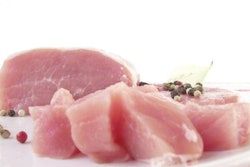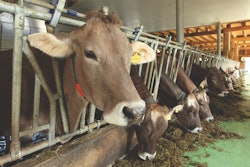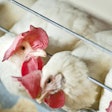
Feeding newly hatched chicks used to be an easy step in the life of a broiler, but now it is recognized as the most critical period.
Based on a wider effort to improve chick quality, the role of a group of nutritionists has been that of identifying the time junctures when nutritional interventions can offer the most.
A rough sketch of a work-in-progress project involving some major players in the industry is offered below, and if it creates more questions than it offers in terms of answers, it is only because this has been a confusing and highly undervalued topic. But, the challenges of modern times, especially the lack of powerful antibiotics and coccidiostats, have made us revise the way we raise birds.
7 days before oviposition
The hen takes about a week to deposit all nutrients required to form the yolk, and a further single day to create the rest. Thus, the yolk is of primary importance as a source of lipids, proteins, vitamins, minerals, pigments (antioxidants), and many biofactors. If yolk formation does not proceed as expected, the hen will not deposit the egg until the yolk is fully formed. During this critical period, it is the liver of the hen that does most of the work, and its health should be a focal point of interest to any nutritionist.
Likewise, this is the time to potentially influence the composition of the yolk with substances that can be transferred to the chick. Some components are difficult to change (lipid concentration, but not its composition), whereas others are easily manipulated (pigmentation).
Egg yolk formation is an under-appreciated period as part of early chick nutrition.
4 days before hatching
This is the time when in-ovo feeding has shown the most promise, but despite all noise and research, results remain equivocal. The science behind the concept remains solid. It is just the lack of practical results that prevent us from using in-ovo feeding to enhance the quality of the chick. Nevertheless, efforts continue in different directions and hopefully a breakthrough will soon appear. Apart from nutrients, which the hen already makes sure are present in the egg, in ovo is now switching to additives due to fund availability and perhaps easier manipulation of egg contents.
24 hours post-hatch
As soon as the chick is hatched, it needs water and nutrients, like any other living organism. Likely for it, there is a good part of the egg yolk that has been resorbed into its gastric cavity acting as a resource of such nutrients – and perhaps other vital components of which we have little or no appreciation. Again, providing external feed and water right after hatch and just before placement is an area of tremendous interest because it can markedly improve chick quality and lifetime performance.
There are, however, so many practical difficulties in doing so, but ingenuity runs apace with difficulties, and numerous products on the market promise great results, often with disappointing outcomes.
Again, the role of residual egg yolk is paramount and brings us back to the beginning, whereas the provision of external nutrients and water should continue to occupy the minds of researchers, especially when the time from hatching to placement extends beyond 24 hours.
4 days post-placement
Modern chicks require modern nutrition, if only because they no longer have time to catch up later. With a modern genetic line being marketed at less than 42 days at above 2 kg live body weight, there is no time to lose. Thus, the feed offered right after placing chicks under the brooders matters the most.
No longer is the typical corn-soy prestarter enough for them, as it takes them back ever so slightly. Modern feeds contain ingredients that avoid this setback and instead offer a boost. This often translates into a more expensive feeding regimen, but hopefully a better overall lifetime performance and profitability. It is an exercise of economics, and such super-prestarters work the best in cases where problems are evident.
First week post-hatch
Having succeeded in all of the above, there is little to be done afterwards except for ensuring birds receive a healthy, wholesome and problem-free diet at adequate quantities, along with good quality water, management, etc.
Little of the above go as planned, even starting with sub-par breeder hen nutrition, and thus, the restarter needs to have more “power” than it should have had. Here, we are looking into preventing enteric diseases from developing as the digestive system has failed to make a robust start. This is the time when most gut health additives are used, and some specialty (mainly protein) ingredients are required to sustain birds.
The realization and delineation of critical times when we can intervene can help the modern chick achieve its potential under an ever-shifting environment. It is a start that will be followed by research and hopefully by a change in products and practices to continue raising broilers profitably.













